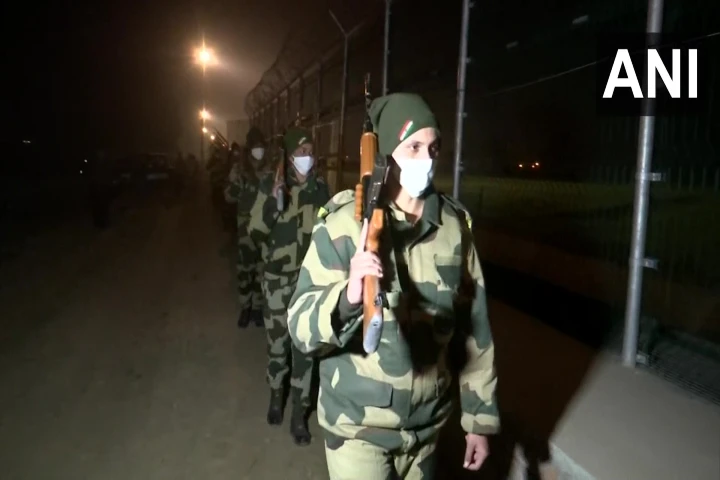Chandigarh: The drug smugglers active in Punjab have switched their strategy and started getting large quantities of contraband using containers via sea while some quantities are also coming via air routes in order to escape detection.
The new routes have been adopted as the security agencies have tightened their vigil on the tunnels and drones along the 540-kilometer-long international border with Pakistan from where the main supply was coming earlier. Several seizures have been made along the land border with Pakistan forcing the smugglers to change their strategy.
The Special Task Force (STF) of Punjab Police has found that the most sought-after ‘Chitta’ (heroin) in Punjab is manufactured in Taliban-ruled Afghanistan. It reaches Punjab after traveling mainly through Pakistan and Iran. The Chhabbar port of Iran and the Karachi port of Pakistan are used to pack up the drugs in big containers to reach key ports in Gujarat. There are 30,000 registered small boats in Gujrat.
R.K. Jaiswal, Inspector General of Police, Special Task Force, said the drugs first reach Uttar Pradesh and Delhi, where they are processed and packed into smaller quantities for retail distribution. A major market for heroin is either Delhi or Punjab.
The opening of Amritsar’s Attari land route on the Pakistan border for trade with Afghanistan is also being used to smuggle drugs while some quantities are coming in from Myanmar, Cambodia, and Laos, known as the golden triangle for drugs.
The traditional land routes along the international border in Punjab, J&K, and Rajasthan are now being used less due to greater surveillance by the BSF. In Punjab, the state police form a potent second leg of defence against drug smuggling. Tunnels and drones also have limitations as they can bring in only small quantities. A drone cannot carry more than 8 to 12 kgs of the drug. The tunnel route is also risky as it sees maximum detection in the drug business.
The new entrants in the drug business are gangsters turned terrorists. This has been revealed with the arrest of several retail smugglers connected to foreign-based Arsh Dalla, Goldy Brar, and Arsh Panesar gangs. The easy drug money is used to hire unemployed youths for extortion and target killings.
In Punjab, 1 gram of ‘Chitta’ fetches Rs 3000 to Rs 4000 in the retail market, while it is priced at Rs 300 to Rs 400 per gram in Afghanistan. Myanmar is also responsible for augmenting heroin smuggling because opium cultivation is legal there. It is opium that is converted to heroin by using chemicals like morphine and acetic anhydride.
Jaiswal says that the Punjab STF is coordinating with multiple investigative agencies, including the NCB and Intelligence Bureau, to pursue various leads and chase down the members of different syndicates. In the past year, the joint efforts of agencies have busted networks, including one that ran heroin processing units in Ludhiana and Muzaffarnagar in Uttar Pradesh with the help of Afghan nationals. A total of 1,500 kg of heroin was recovered in the North.
In 2018, the STF recovered 424 kgs of heroin and arrested 14301 persons, in 2019 seized 460 kgs and arrested 15808, in 2020 traced 760 kgs and arrested 10168, in 2021 a total of 571 kgs and arrested 13403 and in 2022 recovered 591 kgs and arrested 16762 accused.
Recently, a Ludhiana-based ‘Chitta’ manufacturing unit was busted with the arrest of 16 persons, including two Afghans who were a part of an international cartel. A total of 60 kgs of heroin was recovered by the Narcotics Control Bureau (NCB). Punjab police have deputed an IG rank officer to brief the media, every week about their successes against the drug menace.
IG Jaiswal explains that to eradicate the drug menace there is a need to spread education, create awareness, and provide counseling to the youth. Policing, though necessary, is not the sole remedy.



















